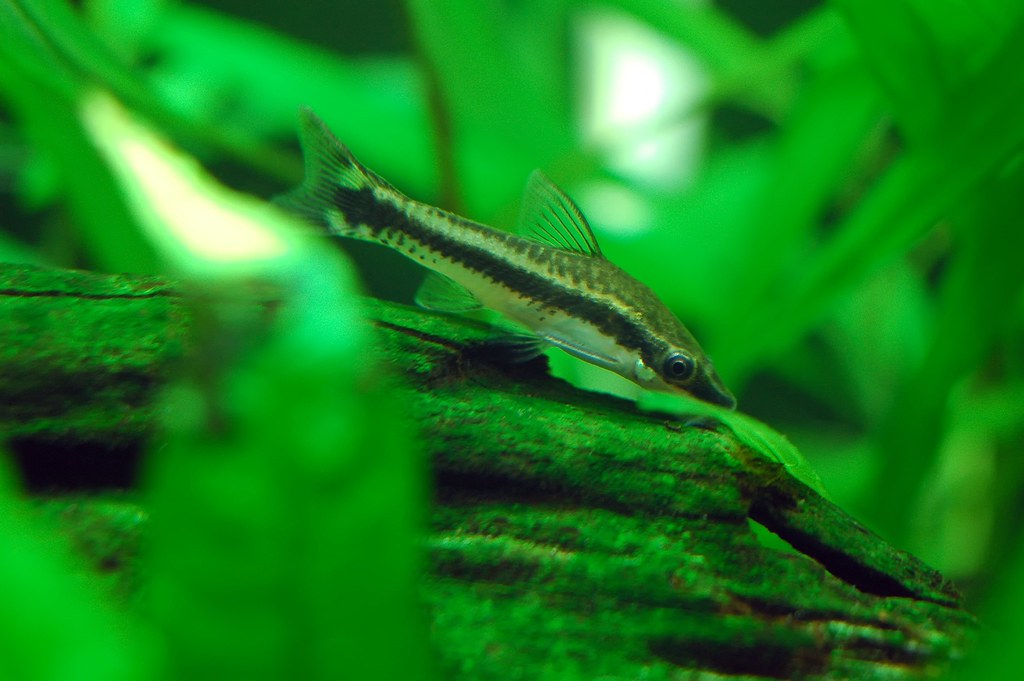Otocinclus vs Siamese Algae Eater: Which is the Better Algae Eating Fish?
Keeping an aquarium clean and free from algae can be a challenge for many fish keepers. Algae growth not only affects the aesthetic appeal of the tank, but it can also have negative effects on the health of the fish and other aquatic organisms. To combat this problem, many aquarists turn to algae eating fish to help keep their tanks algae-free. Two popular choices for this purpose are the Otocinclus and the Siamese Algae Eater. In this article, we will compare these two species and determine which one is the better algae eating fish.
Otocinclus: The Gentle Algae Eater
Otocinclus, also known as the Dwarf Suckermouth Catfish, is a small and peaceful fish native to South America. They are often sought after for their ability to consume various types of algae, making them a popular choice for planted aquariums.
One of the key advantages of Otocinclus is their small size, typically reaching only around 2 inches in length. This makes them suitable for smaller tanks and community aquariums where space may be limited. Their peaceful nature also makes them compatible with a wide range of tank mates, including small fish and shrimp.
Otocinclus primarily feed on soft algae, such as diatoms and green algae, which are commonly found in aquariums. They use their specialized mouthparts to scrape algae off surfaces, including the glass, rocks, and plants. However, it’s important to note that Otocinclus may not be able to keep up with heavy algae growth in larger tanks, so they are more suitable for maintaining a clean tank rather than completely eliminating algae.
When it comes to care, Otocinclus prefer well-established tanks with plenty of hiding spots and plants. They are sensitive to water conditions, so it’s important to maintain good water quality and provide a varied diet that includes algae wafers and blanched vegetables.
Siamese Algae Eater: The Active Algae Eater
The Siamese Algae Eater, also known as Crossocheilus siamensis, is another popular choice for controlling algae in aquariums. This fish is native to Southeast Asia and is known for its active and energetic nature.
Siamese Algae Eaters are larger than Otocinclus, reaching up to 6 inches in length. This makes them more suitable for larger aquariums and tanks with aggressive or larger fish. They have a slender body with a black stripe running horizontally along their side, giving them a unique appearance.
Unlike Otocinclus, Siamese Algae Eaters are more effective at consuming different types of algae, including stubborn and filamentous algae. They use their sucker-like mouths to graze on algae-covered surfaces, including rocks, driftwood, and plant leaves. They are particularly efficient at controlling hair algae, which can be a nuisance in many aquariums.
Siamese Algae Eaters are generally hardy and can adapt to a wide range of water conditions. However, they do require a well-balanced diet that includes both algae and protein-based foods. In some cases, they may also nibble on the fins of slow-moving or long-finned fish, so it’s important to choose tank mates carefully.
Comparison
| Feature | Otocinclus | Siamese Algae Eater |
|---|---|---|
| Size | Small (up to 2 inches) | Larger (up to 6 inches) |
| Algae Eating | Prefer soft algae and biofilm | Eat a variety of algae types |
| Temperament | Peaceful and shy | Generally peaceful, more active |
| Tank Requirements | Small groups, planted tanks | Larger space, strong water flow |
| Water Conditions | Prefer stable, clean water | More adaptable to different conditions |
| Lifespan | 3-5 years | 10 years or more |
| Feeding | Supplement with vegetables | Varied diet, including vegetables |
| Care Level | Moderate, sensitive to water changes | Easier, more resilient to changes |
| Compatibility | Good with small, peaceful fish | Good with a wide range of fish |
| Reproduction | Rarely breed in captivity | Can breed in right conditions |
| Cost | Generally cheaper | More expensive due to size/longevity |
Keep in mind that while both can help with algae control, they have different requirements and temperaments, making them suitable for different types of aquariums.
Conclusion
Both Otocinclus and Siamese Algae Eaters have their own unique qualities and advantages when it comes to controlling algae in aquariums. The choice between the two ultimately depends on the specific needs of your tank and the types of algae you are dealing with.
If you have a smaller tank or a community aquarium with peaceful tank mates, Otocinclus may be the better choice. They are gentle, small-sized, and effective at consuming soft algae. However, if you have a larger tank with aggressive fish or are dealing with stubborn algae, the Siamese Algae Eater may be a more suitable option. They are larger, more active, and can handle a wider range of algae types.
Regardless of which algae eating fish you choose, it’s important to remember that they should not be solely relied upon to keep your tank clean. Regular maintenance, proper lighting, and a balanced diet for your fish are also crucial factors in maintaining a healthy and algae-free aquarium.

